Extract from The Guardian
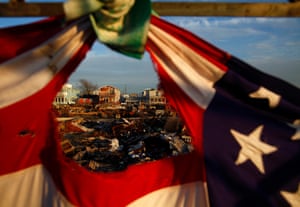
The damage rising temperatures bring is been seen around the country, with experts fearing worse is to come
by Oliver Milman in New York, with photographs compiled by Gina Lachman
Climate change is not an abstract future threat to the United States, but a real danger that is already harming Americans’ lives, with “substantial damages” to follow if rising temperatures are not controlled.
This was the verdict of a major US government report two years ago. The Trump administration’s attitude to climate change was perhaps illustrated in the timing of the report’s release, which was in the news dead zone a day after Thanksgiving.
The report was the fourth National Climate Assessment (NCA), and is seen as the most authoritative official US snapshot of the impacts of climate change being seen already, and the estimate of those in the future.
It is the combined work of 13 federal agencies, and it warns how climate-related threats to Americans’ physical, social and economic wellbeing are rising, and will continue to grow without additional action.
Here we look at the regions of the US where it describes various impacts, with photography from these areas showing people and places in the US where climate change is very real.
Alaska – unpredictable weather
Children play on melting ice near the Yupik Inuit village of Napakiak on the Yukon Delta. Photograph: Mark Ralston/AFP/Getty Images
If there was a ground zero for the climate crisis in the US, it would probably be located in Alaska. The state, according to the national climate assessment, is “ on the front lines of climate change and is among the fastest warming regions on Earth”.
The thinning ice has seen people and vehicles collapse into the frigid water below, hampering transport routes. Roads and buildings have buckled as the frozen soils underneath melt. Wildfires are also an increasing menace in Alaska, with three out of the top four fire years in terms of acres burned occurring since 2000. The state’s residents are grappling with a rapidly changing environment that is harming their health, their supply of food and livelihoods.
Last year was the hottest year on record in Alaska, 6.2F warmer than the long-term average.
North-east – snowstorms, drought, heatwaves and flooding
The most rapidly warming region of the contiguous United States, the north-east is set to be, on average, 2C warmer than the pre-industrial era by 2035, decades before the the global average reaches this mark.
These rising temperatures are bringing punishing heatwaves, coastal flooding and more intense rainfall. Snow storms may decrease in number but increase in intensity, while the warming oceans are already altering the composition of available seafood – lobsters, for example, are fleeing north to the cooler waters of Maine and Canada.
High-tide flooding will soak about 20 north-east cities for at least 30 days a year by 2050, scientists predict, with the region also hit by stronger hurricanes and storms. These changes will “threaten the sustainability of communities and their livelihoods”, the national climate assessment warns.
A major challenge for the north-east will be adaptation to this hotter, more turbulent world. As home to some of America’s oldest cities, such as New York and Philadelphia, the region has plenty of ageing, inefficient housing that ill-equipped to deal with extreme heat.
Northern Great Plains – flash droughts and extreme heat
A lone lodgepole pine in the Beaverhead-Deerlodge national forest in Montana. Photograph: Chip Somodevilla/Getty Images
Water is the crucial issue in the northern Great Plains, a vital resource largely provided by the gradual melting of snowpack that builds up in the colder months.
Rising temperatures are set to increase the number of heatwaves and accelerate the melt of snow, leading to droughts. At the same time, rainfall intensity is growing, with downpours in winter and spring to increase by up to a third by the end of the century.
This is set to lead to a see-sawing affect where severe droughts will be interspersed by flooding, a scenario that played out in 2011, when major floods were followed by drought in 2012. This, the national assessment states, represents a “new and unprecedented variability that is likely to become more common in a warmer world”.
Midwest – heavy rains and soil erosion
The climate crisis is starting to play havoc with established farming routines, however, with increasing heat and pounding rainfall causing the erosion of soils and introduction of harmful pests and diseases. Overall yields are set to drop, with the productivity of the midwest set to drop back to 1980s levels by mid-century.
Forest health is declining, while the extra heat is helping spawn algal blooms in lakes that can affect tourism. The Great Lakes, which contain 20% of the world’s surface fresh water, are experiencing a decline in seasonal ice cover and growing loss from evaporation.
Worsening air quality, again caused by the heat, is expected to cause up to 550 extra deaths a year in the midwest by 2050.
South-east – flooding in Louisiana
A flooded yard in Intracoastal City in the aftermath of Tropical Storm Barry last year. Photograph: Seth Herald/AFP/Getty Bottom Downed trees and power lines in Panama City following Hurricane Michael in 2018. Photograph: Brendan Smialowski/AFP/Getty Images
Communities in the south-east are set to suffer the largest losses from climate change, research has suggested, due to its existing racial and economic disparities. Soaring temperatures, rising humidity and a raft of new diseases are expected to fall heaviest on poorer people and people of color.
Cities such as Birmingham, New Orleans and Raleigh are experiencing more and longer heatwaves, with diseases such as West Nile expected to spread in the region as mosquito activity increases.
Huge hurricanes such as Irma, which slammed into Florida in 2017, are “expected to become more common in the future due to climate change”, the national assessment warns, with
Southern Great Plains – Hurricane Harvey
Hurricane Harvey’s landfall on the Texas coast in 2017 was “one of the costliest natural disasters in US history”, the national assessment said. It ravaged Houston, America’s fourth largest city.
Estimates of the economic impact of the hurricane, which tore through the Caribbean, Texas and Louisiana, have been at least $90bn in loss of property and livelihoods. It was also the cause of scores of deaths.
Some new research earlier this year, based on a radical assessment, put the price tag directly linked to climate breakdown, which is making hurricanes stronger, at $67bn, far more than the previous estimates of a $20bn loss attributable to climate change, rather than natural weather conditions.
The storm made landfall 200 miles from Houston and dropped as much as 60in of rain over parts of the metropolitan area. It killed at least 68 people and flooded more than 300,000 structures in south-east Texas alone.
Harvey was Houston’s third serious flooding event in as many years.
South-west – drought in the Colorado river basin reduced Lake Mead by more than half since 2000
High tide in the Sea of Cortez floods the dry Colorado River delta. Photograph: Pete McBride/Nat Geo
The Colorado River is a critical water supply for seven states but is suffering from years of overuse to irrigate crops as well as a reduction in flow coming from the gradual melting of snow as rising temperatures shrink the snowpack. The volume of water in Lake Powell and Lake Mead, two critical catchments, has dropped by half in the past two decades.
Fire has long been part of this landscape, but the climate crisis is fueling larger outbreaks, with scientists estimating the area burned in the US west since the 1980s was double what it would have been had humans not heated up the planet. These wildfires can often turn deadly, as seen in 2018 when fires in California razed the town of Paradise and threatened coastal communities.
North-west – wildfire increases and associated smoke
Firefighters battle a wildfire in Ventura. Photograph: Mario Tama/Getty Bottom A man evacuates horses near Simi Valley. Photograph: David McNew/Getty Images
The north-western corner of the US is renowned for its clean air, pristine water and tracts of lush forest, but the climate crisis is beginning to take its toll even here.
Rising heat is reducing snowpack and introducing new pests to the north-west’s forests, threatening the key tourism and timber industries. Commercial fisheries, too, face losses, with the warming of river waters hurting the migration and spawning of salmon.
Air quality is set to decline, with the residents of Seattle given a glimpse of this in 2017 and 2018 when smoke from distant wildfires shrouded the city.
Hawaii and Pacific islands – coral bleaching 

Increasingly powerful cyclones menace the region, while rising sea levels threaten to bring salt water inundation to places that have limited freshwater supplies. Hawaii, for example, has seen a significant reduction in rainfall over the past century.
The bleaching and dying of coral reefs, caused by the warming oceans, is an unfolding disaster for the Pacific.
Caribbean – hurricanes
The High Rock neighborhood in the eastern part of Grand Bahama Island after Hurricane Dorian caused huge damage in 2019. Photograph: Angel Valentin/Guardian Bottom Puerto Ricans in San Lorenzo in the river after Hurricane Maria destroyed the town’s bridge, October 2017. Photograph: Alvin Báez/Reuters
A large proportion of people on Caribbean islands live near the coast and rely on a narrow climatic range to grow crops such as coffee and mangoes, meaning sea-level rise and soaring temperatures pose a major challenge to people in the region.
Fiercer hurricanes are also a growing threat, as evidenced in 2017 when Hurricane Maria crunched into Puerto Rico, resulting in thousands of deaths, crippling the power grid and causing billions of dollars in damages.
This article was amended on 20 August to correct to the preferred term for Inuit people.

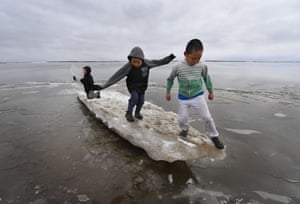
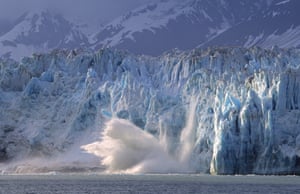
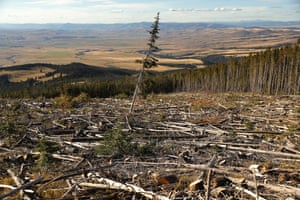
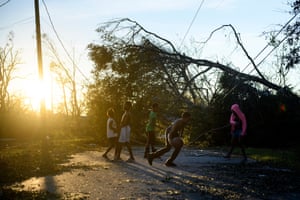




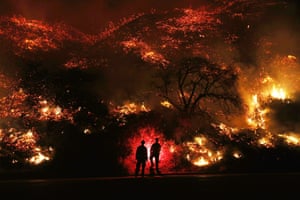

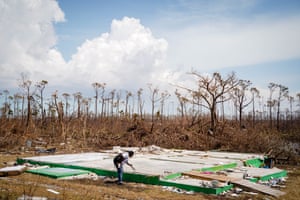
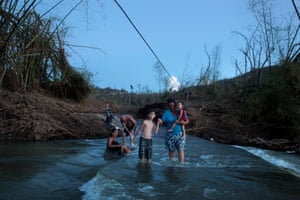
No comments:
Post a Comment